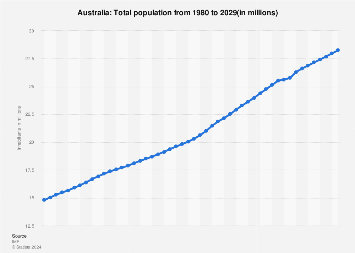News
Australia’s Population: A Journey Through 120 Years of Change

Over the course of the past 120 years, Australia has witnessed remarkable transformations in its population landscape. From a modest count of residents at the dawn of the 20th century to an impressive figure nearly seven times larger in 2021, the nation has evolved significantly.
One notable aspect of this evolution is the increase in life expectancy. In the early 1900s, a newborn could expect to live for around 55 years for males and 59 years for females. This figure has an astonishing rise of 26 years over the decades, leading to current averages of 81.3 years for men and 85.4 years for women.
In contrast to longevity, the fertility rate in Australia has seen a substantial decline. The figure, which was about 3.1 births per woman in 1921, has dropped to approximately 1.7 in 2021. This shift underscores a significant cultural change within Australian families, as couples are choosing to have fewer children.
Additional demographic shifts demonstrate an increased urbanization within the country. Today, about nine out of ten Australians reside in urban areas, a stark contrast to the 58 percent living in cities in 1911. This urban expansion underscores the ongoing trend of migration toward metropolitan centers.
Throughout the last century, historical events have molded the nation’s demographic patterns both positively and negatively. According to the Australian Bureau of Statistics (ABS), the only period when the national population did not grow was immediately following World War I. Other challenging eras, including the Great Depression and World War II, also placed significant constraints on population growth.
Conversely, the global financial crisis of 2008 resulted in unprecedented net population growth, uniquely positioning it as a period of prosperity. However, the COVID-19 pandemic marked a stark contrast, as Australia experienced its slowest population growth in over a century due to worldwide shutdowns and border restrictions.
An analysis by the ABS reveals an aging population, noting that Australia has aged at varying intervals since 1901 with two primary periods: from 1901 to 1944 and from 1971 to 2021. The median age, which was around 22.5 years in 1901, has now escalated to about 38.4 years.
Urbanization has drastically redefined Australia’s demographic profile since the Federation. While over half the population resided in urban areas back in 1901, this figure has surged to nearly 90 percent today. The pace of urban migration was notably swift during the first half of the 20th century, increasing at three times the rate of the latter decades.
The demographic landscape further emphasizes regional shifts, notably through internal migration. Queensland has emerged as a primary beneficiary of this trend, enjoying the highest net population growth. In contrast, states such as New South Wales, Victoria, and South Australia have experienced significant outflows.
The country’s diversity has also expanded through increased overseas migration. Except for the year 2021, when the pandemic curtailed movement, overseas migration has been a major contributor to population growth, surpassing natural growth since 2006. The percentage of overseas-born residents has grown from around 23 percent in 1901 to approximately 29 percent by 2021.
Initially, the majority of overseas-born individuals in Australia came from North-west Europe, particularly the United Kingdom and Ireland. However, migration has increasingly diversified since the introduction of a multiculturalism policy in 1973, with a significant rise in immigrants from Asia.
A deeper look at fertility trends reveals that the average age of first-time mothers has risen steadily over the years—from approximately 23.6 years in 1975 to 30.5 years in 2020. This change is accompanied by a notable decrease in fertility rates for mothers under 30 since the 1970s.
The baby boom period from 1946 to 1961 produced the highest fertility rate recorded at 3.5 births per woman. Post-boom, years witnessed a growth in births among mothers under 30. However, this trend has reversed, with the fertility rates for this age group declining year-on-year.
Parallel to these trends, infant mortality rates have seen a dramatic decrease, plummeting from approximately 10.4 percent in 1901 to a mere 0.3 percent in 2021. This significant drop highlights the advancements in healthcare and child safety standards within Australia.
Moreover, life expectancy has surged dramatically over the last century, with individuals today living an average of 26 years longer than in 1901. The likelihood of reaching the milestone age of 100 is astronomically higher in today’s society, with men being 143 times more likely and women 82 times more likely to celebrate their centennial birthday.
Significant legislative changes have also contributed to demographic shifts. One landmark moment occurred in 1967 when nearly 91 percent of Australians voted to update constitutional references concerning Aboriginal and Torres Strait Islander peoples, allowing First Nations individuals to be counted for national purposes.
The ABS acknowledges the data pertaining to Indigenous populations varies in accuracy, providing a more nuanced understanding of Australia’s growing demographic tapestry over the past century. Through these changes, Australia’s population story reflects a nation embracing greater diversity, increased longevity, and evolving societal norms.












